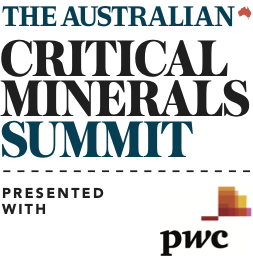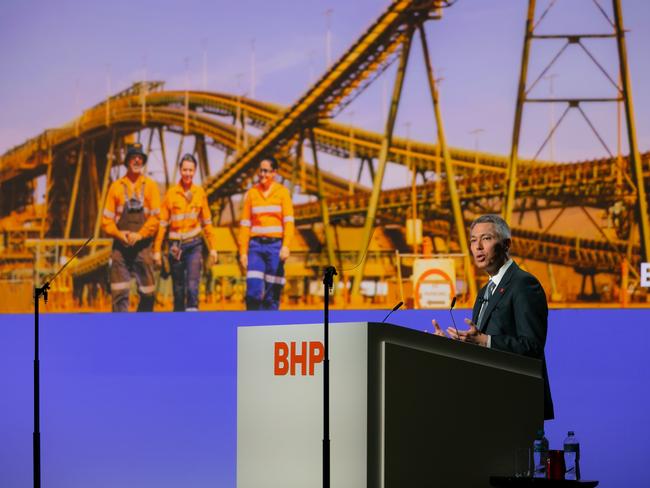
Those pillars will shock many sharemarket investors because they put on display BHP’s view of the future of both lithium and steel.
Meanwhile, as I described earlier this week, if BHP gains control of OZ Minerals it will lock in its strategy to be a significant supplier of nickel sulfite to the world electric vehicle battery industry.
But the strategy goes further and also makes it likely that BHP will construct one of the largest industrial complexes in Australia – a massive two-part smelter driven by electricity generated by solar and wind.
The addition of OZ Minerals’ Prominent Hill concentrate will make it possible to make this smelter larger than was likely if it had been based only on BHP’s Olympic and Oak Dams ore.
This will be a huge boost for South Australia.
BHP believes with a passion that its thrust into nickel, copper and uranium places it at the core of the electrification boom that is about to envelope the world. And it is also passionate about potash, for different reasons.

But the sharemarket adds two other potential mineral booms to nickel and copper: lithium and green steel. And so, before making the OZ Minerals thrust, BHP reviewed its attitude to both these developments.
The sharemarket is ranking lithium with copper and nickel as a major beneficiary of electrification.
But unlike Rio Tinto and other major miners, BHP does not plan to invest in lithium.
The BHP view is that the mineral is in abundance, and it is difficult to gain scale without investing in a lot of small mines, which would not give it the benefit of a low position on the cost curve.
The one global venture that has scale and a low cost curve position is Greenbushes, but it is controlled by the Chinese, albeit with minority Australian and international equity.
BHP may be wrong, but it is a warning to all those scrambling to buy assorted stocks in the current lithium boom.
BHP’s second conclusion in the OZ Minerals review was that while hydrogen has a clear energy future in the new world environment, it does not believe that green steel produced using hydrogen will be a major part of the world steel industry in the next couple of decades.
BHP has reached this conclusion because the major customer for its hematite iron ore – China – has spent countless billions relining its major blast furnaces and constructing new ones. India has done the same thing on a smaller scale.
These two major investments mean that BHP’s hematite ore will be a major force in world steel production in the medium term.
Accordingly, BHP is concentrating on better emission outcomes from hematite and high-grade metallurgical coal.
Andrew Forrest takes a very different view.

It’s a significant assumption from the BHP and if it is wrong and green steel produced from magnetite ore and goethite (without asbestos) sweeps the world, BHP will be on the wrong foot.
Fascinatingly, former BHP director Malcolm Broomhead has invested in goethite.
Partly because of Victoria’s immense low-cost gas reserves, which have been confirmed by the world’s largest gas reserve estimator, MHA/Sproule, Australia is probably is in a position to lead the world in green steel — but that would require a change of government in Victoria.
Meanwhile, BHP might not have been able to take over OZ Minerals had it continued with its dual Australian/British ownership structure.
OZ Minerals was formed in 2008 when Oxiana and Zinifex merged.
In 2009 OZ Minerals recommended a takeover offer by China Minmetals. But the government of the day declared that, for defence reasons, OZ Minerals’ Prominent Hill copper ore body could not be owned by the Chinese because it adjoined the Woomera rocket range.
Minmetals took all the OZ assets apart from Prominent Hill.
It is unlikely that any foreign company would have been allowed to buy OZ Minerals but, by ending its dual listing, BHP was an Australian company so was able to bid for OZ Minerals without that risk.
While there are obvious economies in mining BHP’s Olympic and Oak Dam mines at the same time as the Prominent Hill ore bodies, the characteristics of the different ores allowing a much larger smelter to be erected was an important motivation for BHP in the takeover. Once it is consummated, feasibility planning for the smelter will begin. But of course, BHP will not confirm that investment until that feasibility is completed.
BHP already has a smelter on site that was erected by Western Mining. It had hoped to be able to separate the copper, uranium and gold mineralisation at Olympic Dam by leaching, but has not been successful, and it now takes the smelter path.
BHP now has three major new development projects: nickel, potash and, of course, the South Australian copper, uranium and gold operation.







The studies prior to BHP’s takeover bid for OZ Minerals confirmed two fundamental pillars in the way the Big Australian sees the future of significant parts of the world mineral industry.